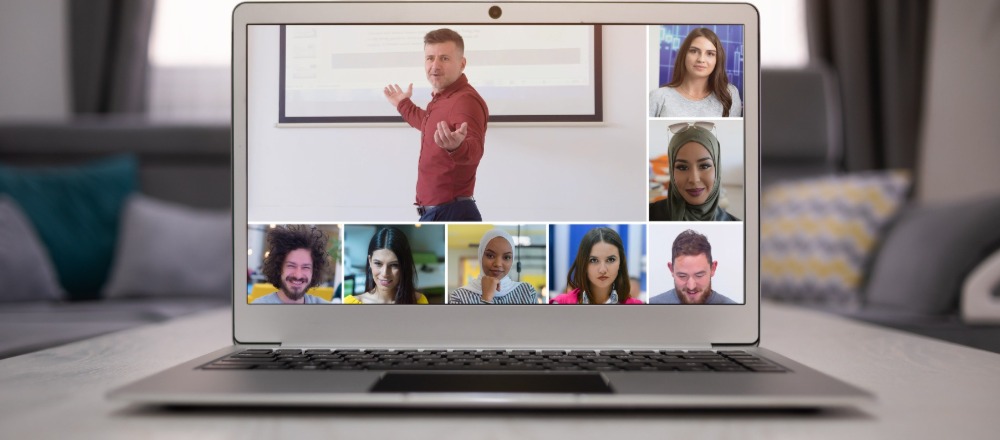Strategies for Remote and Blended Learning

Strategies for Remote and Blended Learning: Adapting to Changing Educational Environments
The landscape of education has dramatically changed in recent years, necessitating a shift towards remote and blended learning approaches. As teachers and support staff, adapting to these changing educational environments is essential for maintaining effective teaching practices and ensuring student success. This blog will explore key strategies for successfully implementing remote and blended learning, focusing on enhancing student engagement, utilising digital tools, and assessing student progress.
1. Understanding Remote and Blended Learning
Remote Learning refers to teaching and learning that occurs when students are not physically present in the classroom. This can take place through various digital platforms, allowing students to learn from home.
Blended Learning, on the other hand, combines traditional in-person instruction with online learning. This approach enables students to benefit from face-to-face interactions while also accessing a wealth of digital resources.
Understanding these distinctions will help educators tailor their teaching strategies to meet the unique needs of their students in different learning contexts.
2. Implementing Effective Digital Tools
Selecting the right digital tools is crucial for facilitating remote and blended learning. Consider the following:
- Learning Management Systems (LMS): Platforms such as Google Classroom, Microsoft Teams, or Moodle can centralise resources, assignments, and communications, making it easier for students to navigate their learning.
- Interactive Tools: Use tools like Kahoot, Quizizz, or Padlet to create interactive quizzes and collaborative spaces where students can engage with the content and each other.
- Video Conferencing: Platforms like Zoom or Google Meet allow for live classes, fostering real-time interaction and engagement.
Tip: Provide a brief tutorial on how to use any new digital tools you introduce to ensure all students can access them effectively.
3. Encouraging Student Engagement
Keeping students engaged in a remote or blended environment can be challenging, but there are strategies to enhance participation:
- Use Varied Teaching Methods: Incorporate a mix of videos, discussions, group projects, and hands-on activities to cater to different learning styles and keep students interested.
- Foster Collaboration: Encourage students to work together on projects or assignments. Use breakout rooms in video calls to facilitate small group discussions.
- Set Clear Expectations: Clearly outline your expectations for participation and engagement, and provide regular feedback to help students stay motivated.
Tip: Use icebreakers or team-building activities at the start of each session to create a sense of community among students.
4. Assessment Methods for Remote Learning
Assessment in remote and blended learning environments requires adaptation. Consider the following approaches:
- Formative Assessment: Use quizzes, polls, or reflective journals to gauge student understanding throughout the learning process. This allows for ongoing feedback and adjustment of teaching methods.
- Project-Based Learning: Assign projects that allow students to demonstrate their understanding creatively. This can include digital presentations, videos, or virtual portfolios.
- Peer Assessment: Encourage students to review and provide feedback on each other's work. This fosters collaboration and allows students to learn from one another.
Tip: Incorporate self-assessment tools to empower students to reflect on their learning and set personal goals.
5. Supporting Diverse Learners
Adapting to remote and blended learning requires attention to the diverse needs of students. Consider these strategies:
- Differentiation: Provide various resources and tasks at different levels of complexity to cater to students with varying abilities.
- Flexible Learning Paths: Allow students to choose how they demonstrate their understanding, whether through written assignments, videos, or presentations, accommodating their strengths and preferences.
- Regular Check-Ins: Maintain open lines of communication with students, offering support and understanding as they navigate their learning.
Tip: Use surveys or feedback forms to understand your students' needs and preferences, adjusting your approach accordingly.
6. Fostering a Positive Online Classroom Environment
Creating a supportive and inclusive online environment is key to student success. Here are some tips:
- Build Relationships: Take time to connect with students personally, whether through one-on-one check-ins or casual conversations. This helps students feel valued and supported.
- Establish Norms: Set clear guidelines for online behaviour and communication to foster a respectful and positive classroom atmosphere.
- Celebrate Achievements: Acknowledge and celebrate student successes, no matter how small, to boost morale and motivation.
Tip: Incorporate virtual awards or recognition ceremonies to celebrate students’ efforts and accomplishments.
7. Professional Development and Continuous Improvement
As the educational landscape evolves, so should your teaching practices. Consider the following:
- Engage in Professional Learning: Participate in webinars, workshops, or online courses focused on remote and blended learning strategies to stay updated on best practices.
- Collaborate with Peers: Share experiences and strategies with colleagues to learn from one another and find innovative solutions to common challenges.
- Reflect on Your Practice: Regularly assess your teaching methods and student outcomes to identify areas for improvement and celebrate successes.
Tip: Create a professional learning community within your school to foster collaboration and share resources.
Conclusion
Adapting to remote and blended learning environments requires innovative strategies and a commitment to continuous improvement. By leveraging digital tools, encouraging engagement, and supporting diverse learners, educators can create effective and inclusive learning experiences. Embrace the opportunities presented by these new educational landscapes to inspire and empower your students.
How have you adapted your teaching strategies for remote or blended learning?





